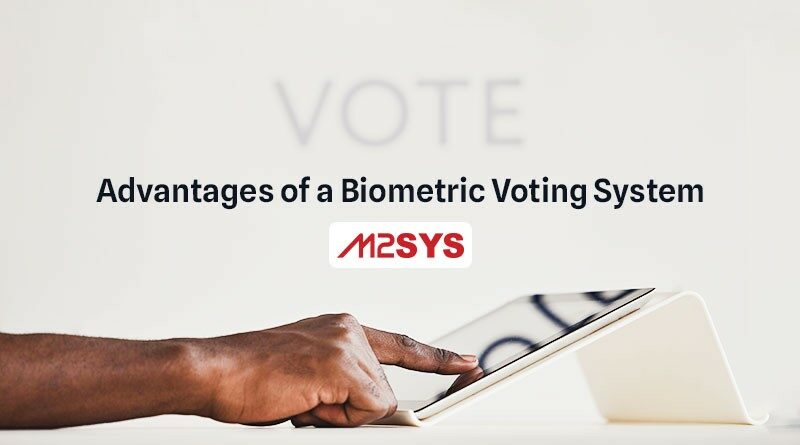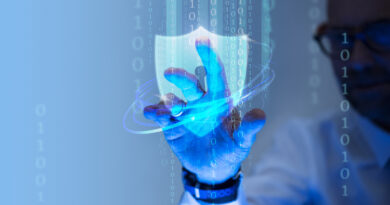What Are the Advantages of a Biometric Voting System?
Over the last years, we have seen revolutionary changes in biometrics. Biometric technology has been implemented in every sector one can imagine, and it is being used to automate the existing processes. One of the major fields where biometric technology has created a huge impact is the government sector. This article will discuss the advantages of using a biometric voting system.
What Is a Biometric Voting System?
Many nations are still having difficulty enrolling and verifying voters. As a result, they’re evaluating the negative impact on their democratic systems. Indeed, during the last ten years, biometric registration and voting technologies have grown in popularity. The goal is to achieve voter equality, founded on the idea of one person, one vote, which states that everyone’s vote should be counted fairly.
In a biometric voting system, the voters are registered based on their unique physical characteristics like fingerprints and even facial or IRIS recognition. Using these biometric characteristics, a person is registered as a voter. Identity theft, voting fraud, and other forms of voter fraud and tampering are targeted by biometric technology. The biometric voting system aims to provide a unique list of voters with zero duplicate voters.
The election is deemed fair in constitutional provisions if it respects the standards of liberty and equality and the confidentiality of voting. It entails, in particular, a duty on the side of the electoral bodies to ensure the fairness of the voting process. All aspects of the election process should be considered, from voter registration to the outcomes of the votes and the electoral activities themselves. The use of biometric technology in electoral processes helps overcome the obstacles of executing the “one citizen, one vote” concept required for democratic, free and transparent elections.
How the Biometric Voting System Works
It is crucial to have a biometric voting system because it promotes fair registration and eventually a better outcome. There are a limited number of ready-to-use Biometric voting systems out there, and TrueVoter™ is a biometric voter registration system for fair and credible elections. Here is how TrueVoter™ works:
1. Enrollment
The first stage is the enrollment process, where voters’ biometric information is recorded using a biometric device. Depending on the need, it can use a single modality or multiple modalities like a fingerprint, facial, or Iris. The data is managed under a central application.
2. Matching
An advanced search algorithm does a 1:N matching to eradicate any deprecating dates. The duplication process used by TrueVoter™ is the fastest and most advanced system in the world for providing an accurate and fast result.
3. Authenticate
The final stage is the authentication or adjudication, where a final voter list is provided showing zero duplicate data. This is the most important step toward ensuring a fair and corruption-free election.
Advantages of the Biometric Voting System
You may understand why a country needs a biometric voting system, but apart from eliminating duplicate data, a few more advantages come with the biometric voting system.
1. Transparency
The actual democratic process is transparent from start to end with a biometric voting process. Moreover, the framework’s design allows an authority to verify that votes accurately reflect a voter’s aim when casting a ballot.
2. Participation
Many voters bailout of the voting process due to worries about identity theft, as votes could be cast using fake identities. Since the voters are registered with unique biological traits, it is impossible to tamper with them. As voters know that only they can cast their own vote, it will increase participation.
3. Scalable
Compared to the old approach to voters registration, the biometric voting system is easily scalable. With the old method, the number of voters grows as the population grows. Adding new voters to the system can be troublesome. On the other hand, adding new voters is user-easy with a biometric voting system, and there is no chance of duplication.
4. Fair
The biometric system allows the right voters to cast votes and eliminate any chance of scams. This allows a fair result and a fair election.
5. Secure
Suppose you are using TrueVoter™ for biometric voter registration. Doing so will ensure strong encryption, fault-tolerant design, disk mirroring, automatic database backups, and disaster recovery options. These are some of the precautions used to preserve citizen privacy.
Sovereign states are increasingly resorting to biometric voting technologies to enable fair, credible elections free of fraud and unlawful behaviors to safeguard democratic ideals. Election integrity is a cornerstone of contemporary democracy since it encourages trust and honesty in elected governments and confidence and faith in elected officials.












There is no doubt that biometric voting can eliminate lots of voting fraud. To grab the leash of corruption implementing biometric powered voting system is absolute must. Thank adam for this informative article.
A biometric voting system is a method of voter registration and voting that uses unique physical characteristics, such as fingerprints or facial recognition, to identify and verify voters. The goal is to achieve voter equality and prevent voter fraud and tampering by providing a unique list of voters with zero duplicate voters. The TrueVoter™ system is one example of a biometric voting system, which includes an enrollment process, matching and duplication process, and final authentication step. Advantages of a biometric voting system include increased transparency in the democratic process, increased voter participation, and scalability in adding new voters to the system.
I have been speaking of this for years. I’ve been against the signing of these electronic pads. Anyone who has signed for a credit card purchase knows this. It’s either the pad or our own laziness. How many times have we signed one and asked yourself, who signed that. Which makes signature verification all but impossible to verify.